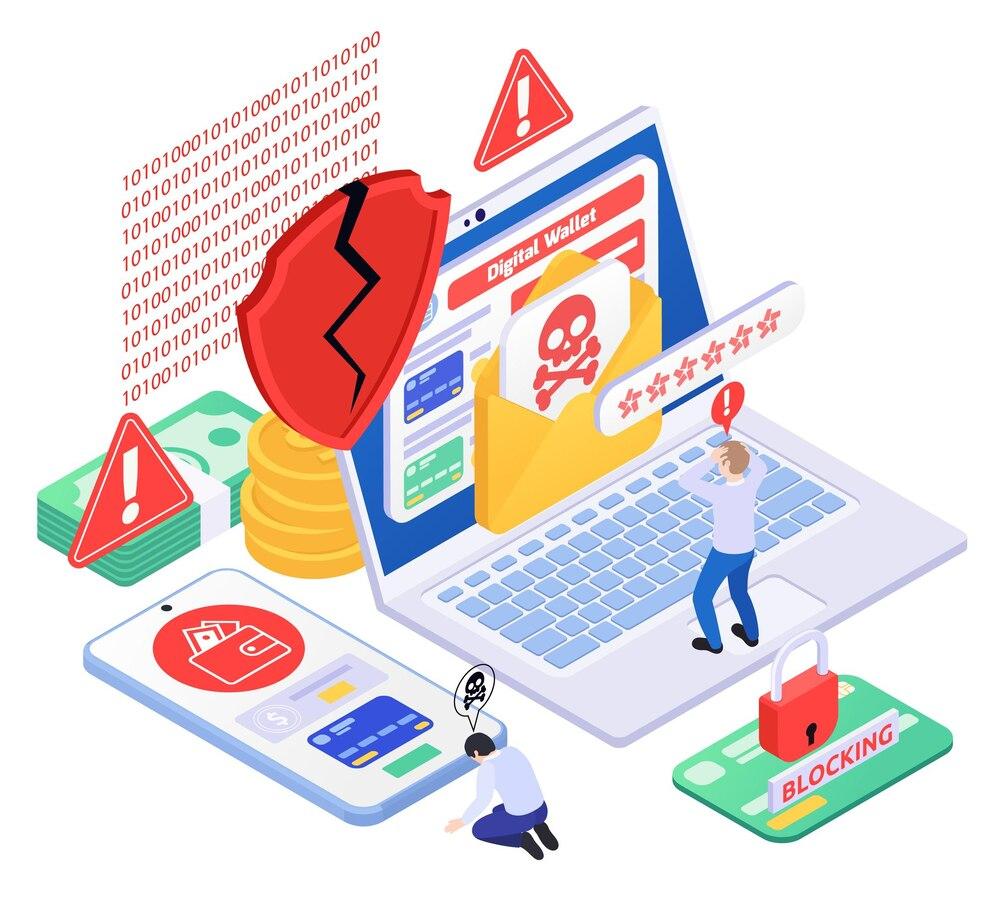Social networks have become an integral part of our lives, providing an opportunity to communicate, share experiences, and make new acquaintances. However, with the increased active use of platforms such as Facebook, Instagram, and Twitter, the risks of fraud and personal information leaks have also increased.
Fraud in Social Media: Main Schemes
Fraud in social media can take various forms, but its main goal is to deceive users to gain access to their personal information. Fraudsters use various attack vectors, such as fake accounts, phishing, messenger scams, and other methods.
One of the most common schemes is the creation of fake accounts. Scammers can create profiles that look real, using photos, information, and even names of well-known personalities or friends.
Fakes and Disinformation
The use of fake accounts is becoming a real problem for users. Scammers, creating fake profiles, can spread disinformation, manipulate public opinion, and form false expectations. For example, they may request money from friends, pretending to be in a difficult situation.

Personal Data Leaks: How It Happens
Social media users often do not realize how vulnerable their data is. Many do not think about what information they post in open access. Scammers monitor profiles where users list their names, addresses, birth dates, and even phone numbers.
Phishing is another common form of information theft. It can occur through fake messages or links that appear official from the platform. Users, clicking on such links, may enter their data on fake sites, which are stored by scammers.
When personal data becomes available to scammers, the consequences can be catastrophic. Data loss can lead to financial losses, identity theft, and other problems. For example, knowing basic personal information, a scammer can open a credit line or make purchases on your behalf.
How Data is Stolen Online
Data can be stolen in various ways, and scammers constantly improve their methods. One popular way is using software to automate the collection of information about users. By infiltrating personal chats or group discussions, scammers gather information that is later used for fraud.
One of the growing trends is the use of AI and machine learning for analyzing user data. Such technologies can help scammers identify vulnerabilities and predict how best to manipulate victims. This, in turn, can lead to more sophisticated fraud schemes.
Social Media and Financial Risks
Along with the development of social networks, financial risks for users are also growing. Fraud pushes people towards financial losses, undermining their confidence in using such platforms. Those who actively use platforms for business also often fall victim to scammers.
Working on social media requires a certain amount of caution. It is important to understand how scammers can use your information for deception. Users should be cautious about requests for transfers or personal information, especially if they come from unfamiliar people.
Scams on Facebook and Instagram
Facebook and Instagram are among the most popular social platforms, making them attractive to scammers. The scam related to counterfeit accounts is most common and unsafe here.
Online trading has also been affected by scammers. Those wishing to buy something through Facebook Marketplace or Instagram may encounter scams. Scammers may offer goods at incredibly low prices, asking for prepayment. After receiving the money, they disappear without delivering the goods.

How to Protect Personal Information
Long-term protection of personal information is an important aspect of safe interaction on social networks. There are many methods and recommendations that can significantly reduce risks.
The first step to protection is the correct privacy settings. Ensure that your profile is closed to readers who are not your friends. Limit access to personal information by canceling the ability to view shared data. Whenever possible, use the highest levels of security available on the platform.
It is also important to be careful with the messages you receive. Do not open links from unfamiliar senders or enter your information on suspicious websites. Also, pay attention to incorrect or incomplete addresses.

Fake Accounts of Scammers
Fake accounts are used by scammers for their schemes, and their number is growing every year. The main task of a scammer is to create a trustworthy image to gain access to the user's personal information.
To recognize a fake account, pay attention to several key aspects. Unusual profiles, lack of friends, or too much in common are possible red flags. It's also worth checking photos for special tags borrowed from other sources.
Scam in Messengers
With messengers such as WhatsApp, Telegram, and others, scammers have gained another platform for their activities. Here they can interact with victims more safely and anonymously, making detection difficult.
Scammers may use various tactics, including games, lotteries, and surveys, which require users to enter personal information. It is important not to succumb to temptation and to remain vigilant, as in social networks.

Since messengers can be both safe and unsafe environments, you must always monitor your information. Use two-factor authentication to strengthen protection, and ensure that your apps are updated to avoid vulnerabilities.
The use of social networks and messengers is integral to our lives, but it is important to remember the risks associated with fraud and personal information leaks. Scammers are finding new ways to deceive users, and one of the best defenses is awareness. Maintain a high level of privacy, be alert to suspicious messages, and actively use security features on platforms. This will help you significantly reduce the risk of becoming a victim of a scammer and keep your personal information safe. Be careful and watch your security online!


